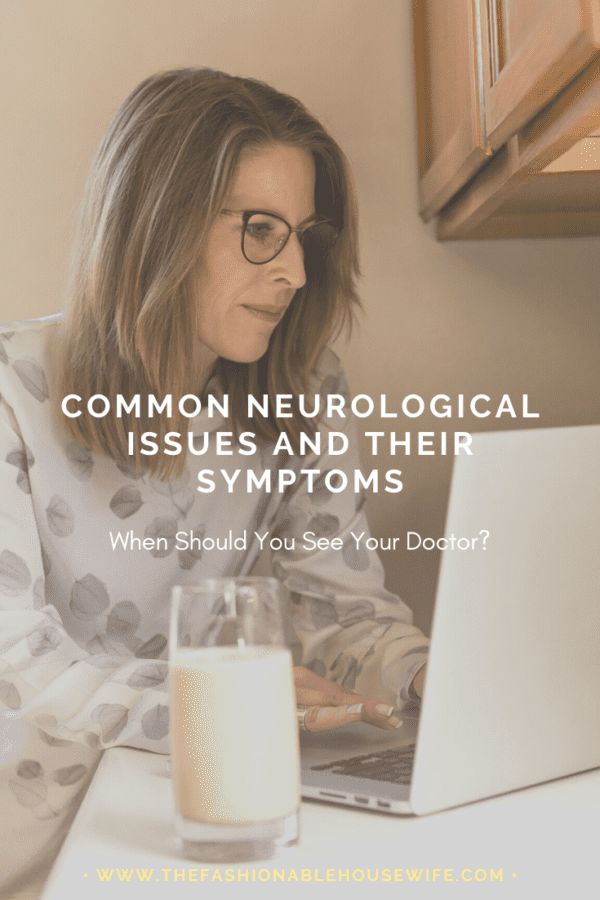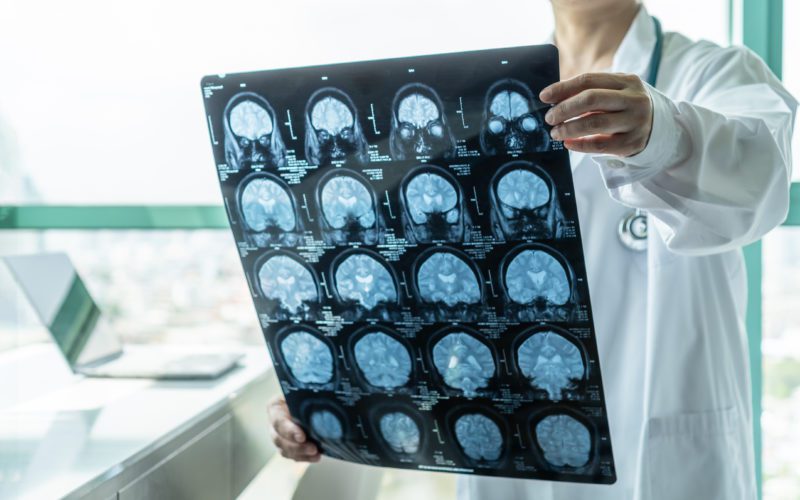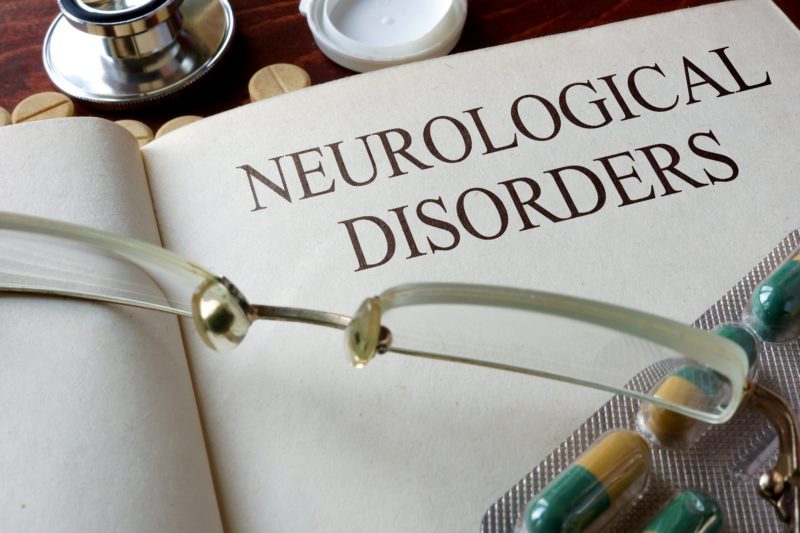
When you’ve studied the nervous system in your science class before, perhaps you may have been presented with a network of nerves, all interconnected to make it function the way it should, every day. It doesn’t take rocket science to understand that one simple disruption in the way your nerves function or behave may lead to a possible neurological issue, both mild and serious. From simple day-to-day activities like talking, eating, and walking to more complex functions like critical thinking, decision-making, and problem-solving, your nervous system plays a very important role to ensure your life goes through normally.
Understanding what those potential neurological issues are, with each of its underlying symptoms is very important. This is one very good way to stay proactive with your neurological health and overall well-being in general. Once you notice some of the symptoms start to arise, you can be more proactive with your approach by checking in with your doctor from Dickinsonneurosurgery.com, or any other trusted clinic in your local area, as soon as possible. You don’t just dismiss any minimal symptom as one that you can simply ignore.
Below is a list of some of the most common neurological issues, with accompanying information of each, specifically its symptoms.
1. Headache

A headache is very common, as everyone will certainly go through this multiple times in their life. Typically, headaches shouldn’t be a cause of concern, unless it has started to recur more frequently, and with greater intensity, too. If the latter applies to you, then you should see a doctor immediately, just to be sure your headache isn’t a symptom of any other underlying condition.
For instance, if severe headaches or migraines start to occur so suddenly and more frequently at that, these are all red flags of something more serious, like meningitis or intracranial and internal bleeding. There are so many advanced treatment forms today, so you shouldn’t take the availability of early intervention and treatment for granted.
The symptoms of headaches, however, vary, according to type. Typically, headaches are accompanied by feelings of nausea. More specific symptoms, according to the type of headache are as follows, among others:
- Migraines, which are usually characterized by throbbing pain on the side of the brain. You may also tend to become more sensitive to light and loud noises. Other symptoms include:
- Prodrome, or that phase where your mood may start to change, such as feeling crankier than usual;
- Aura, that phase where you’ll start to feel a visual disturbance;
- Postdrome, the final phase of your migraine, where you may not like to eat or have problems with concentration.
- Tension Headache refers to that type where you feel a tightening around your head, along with a dull and steady pain. Tension headache may be characterized by symptoms, like:
- Band-like pain or pressure around your head;
- Pain that often happens in the middle of the day;
- Headache right when you wake up;
- Fatigue;
- Trouble concentrating.
- Chronic Daily Headaches can happen 15 days or more in a month, usually lasting for around three months. Some can either be short, while others may last for more than four hours.
- Posttraumatic Headaches, which usually occur two to three days after a head injury. This is characterized by symptoms, like:
- Irritability;
- Headache that usually gets worse from time to time;
- Getting tired quickly;
- Vertigo;
- Memory problems.
- Hemicrania continua or a chronic and ongoing headache which generally affects the same side of your face or head. You’ll feel:
- Worse pain, when you drink alcohol;
- Red or teary eyes;
- Worse pain, with physical activity;
- Droopy eyelids;
- Sensitivity to light and sound.
2. Multiple Sclerosis
Multiple Sclerosis is a long-lasting neurological disorder affecting your eyes’ optic nerves, brain, and spinal cord. This can cause problems in your vision, muscle control, and other body functions. Multiple sclerosis typically strikes when your immune system attacks a fatty substance in your body known as myelin, wrapped around your nerve fibers for its protection. Without the myelin, your nerve fibers can easily get damaged and therefore starts to form scar tissue.
The signs and symptoms of multiple sclerosis can differ from one person to another, depending on the gravity of your disease. It can also differ according to the nerve that has been damaged. Generally, however, symptoms can include:
- Numbness or weakness in one or more limbs;
- Lack of coordination and tremors;
- Prolonged double vision;
- Slurred speech;
- Dizziness.
Once you start to have the onset of those symptoms, it’s important to seek medical advice as soon as possible. Diagnostic tests will be given to help diagnose your condition whether it’s multiple sclerosis or not. Some of these tests are:
- MRI scan, where your doctor uses a contrast dye to detect any active and inactive lesions in your spinal cord and brain;
- Spinal tap or a lumbar puncture, which your doctor uses to identify any potential abnormalities in your spinal fluid;
- Visual evoked potentials (VEP), where electrodes will be attached to your scalp and record electrical signals caused by visual stimulus responses.
Multiple sclerosis can be a serious neurological disease, especially when treatment isn’t given. Once it progresses, it can lead to complications and other infections like accidents and cardiovascular disease. In effect, these can significantly lower the lifespan of a person living with multiple sclerosis than one who doesn’t suffer from such.
The treatment for multiple sclerosis can come in three forms, usually in the following stages:
- Treating the attacks per se;
- Undergoing disease-modifying therapy to reduce the onset of more attacks;
- Treating the residual symptoms from prior attacks.
3. Alzheimer’s Disease

Alzheimer’s disease is a form of dementia, and it’s very common as the brain starts to degenerate, once you age. Specifically, it refers to a neurological condition wherein the brain cells start to die and therefore causes cognitive decline and memory loss. The symptoms can start out as mild, and then later on progress over time. Some of these symptoms include:
- Memory loss, whereby the person now finds it challenging to remember and take care of new information, leading to:
- Getting lost or aimlessly wandering;
- Losing objects.
- Problems with recognition, whereby the patient now becomes less able to recognize faces and therefore also starts to forget their family, and also forgets how to use even basic tools.
- Problems with writing, speaking, and reading, whereby the person now forgets how to use even common words and, as time progresses, start to commit more writing and spelling mistakes.
- Marked changes in personality and mood, usually characterized by the following:
- An assertive patient has now become more subdued, and vice-versa;
- Signs of depression start to develop like changes in mood, sleep, and appetite;
- Withdrawal from seeing family and friends;
- Develops characteristic fears or new environments.
- Starts to show difficulty in completing familiar activities, including:
- Trouble preparing their own meals;
- No longer doing their previous hobbies like sewing, knitting, playing an instrument, or singing;
- Stops in the middle of a project, like failure to finish baking or a craft project.
At the moment, there isn’t any single cause identified yet as to what are the causes of Alzheimer’s disease. There are certain factors that may contribute to its onset which include:
- Genetics;
- Age;
- Family history.
Alzheimer’s disease is also diagnosed in stages, based on the severity of the condition. Typically, it can start out as mild and then, later on, develop into a more serious state. These stages are:
- Mild Alzheimer’s Disease, which is most often the stage wherein patients get diagnosed. This is characterized by underlying symptoms like forgetfulness, cognitive difficulties, and personality and behavior changes.
- Moderate Alzheimer’s Disease, wherein damage starts to happen in the areas of the brain responsible for conscious thought, controlling language, and sensory processing. People at this stage may also start developing paranoia, hallucinations, and delusions.
- Severe Alzheimer’s Disease, which is usually now the end-of-life stage wherein patients have to be dependent on others for their care, and can no longer communicate.
4. Amyotrophic Lateral Sclerosis (ALS) or Lou Gehrig’s Disease

Amyotrophic Lateral Sclerosis (ALS), also known as Lou Gehrig’s Disease can affect both children and adults, alike. This is a rare neuromuscular condition that affects the nerve cells in the spinal cord and brain. When the motor neurons no longer send impulses to the muscles, they’ll start to go through atrophy or the process of wasting away, which increases the onset of muscle weakness.
The causes are yet unsure, but the development of the disease is often linked to environmental and genetic factors. But there are identified signs and symptoms, such as:
- Cramping and twitching of muscles;
- Weakness and fatigue;
- Difficulty projecting speech and voice;
- Difficulty swallowing and breathing.
When you develop symptoms that start to become recurring, you have to see a doctor immediately. That’s when a thorough medical examination will be given, to come up with a classification of how severe your ALS is. These classifications are:
- Classical ALS, or the progressive neurological disease, with a deterioration in the lower and upper motor nerve cells;
- Primary Lateral Sclerosis, the type of neurological disease that affects the upper motor neurons. It’s also the rarest of all forms of ALS.
- Progressive Bulbar Palsy (PBP), affecting the lower neurons, leading to difficulty swallowing, speaking, and chewing.
5. Epilepsy

Epilepsy and other seizures are a serious condition which affects both children and adults alike. Epilepsy can happen when there’s abnormal electrical activity affecting the brain, which makes you more vulnerable to having unprovoked and recurrent seizures. By this, it means that the seizure can’t be explained or related to any underlying cause, such as alcohol dependence.
But this isn’t to say that all seizures are epileptic seizures. You still need the expertise of a doctor to diagnose whether or not the seizure is already considered epilepsy. That way, proper medication, and treatment can be given.
A seizure is defined as a sudden rush of electrical activity in the brain. Epilepsy, on the other hand, refers to the chronic disorder which causes recurrent and unprovoked seizures. The symptoms of epilepsy can vary from one patient to another, depending on the kind of epilepsy they have. But, some of these common symptoms are:
- Alterations of sense of taste, sight, and touch;
- Tingling and twitching of limbs;
- Unresponsiveness;
- Stiffening of the body;
- Loss of bowel and bladder control.
6. Stroke
Depending on its severity, some strokes can be so mild that you can walk out of it well enough and heal perfectly, while others have life-long effects and may be potentially life-threatening. Unfortunately, strokes are also quite common, affecting millions of patients, annually. A stroke happens when there’s damage to the brain due to arteries leading to the brain becoming impaired. Strokes can come as a big surprise, such that you can never really be prepared for it. Or, you may not even be aware of its impending doom.
However, there are certain signs which can give you that nudge that you may need to see a doctor ASAP. These signs include:
- Severe, recurring headache;
- Blurred vision;
- Numbness or weakness of the face and arm;
- Confusion and trouble speaking;
- Loss of balance and dizziness.
Once you’ve suffered a stroke, you should be very particular about your doctor’s visits. The more obedient you are with their doctors, the lower the risk of a second, more serious stroke potentially happening. You’ll also be encouraged to create lifestyle modifications, such as:
- Diet changes by eating healthier food and less junk.
- Exercising at least half an hour daily.
The risk of a stroke happening is also greater in individuals with the following risk factors:
- Those who are smokers;
- Those who have been diagnosed with diabetes;
- Those who are obese and lack exercise;
- Those who have existing heart disease; and
- Those who are heavy drinkers.
Conclusion
The list above isn’t yet exhaustive. These are just some of the most common as there are so many other neurological disorders a human being can potentially suffer from. Depending on how severe the disorder is, not all of these are meant to bring in serious effects on your quality of life.
The most important thing for you to remember with your newfound awareness and information about potential neurological issues shouldn’t just stop there. Once you feel any recurring symptom, even if it may not be serious, do pay a visit to your doctor right away. Especially with matters as serious as those affecting your brain.



